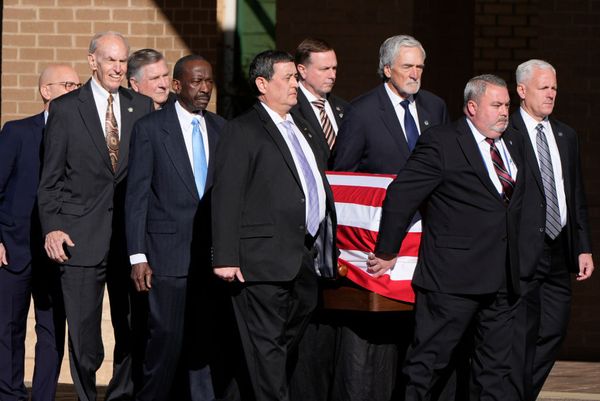
Do you like Stan Grant or prefer Virginia Trioli? Believe the ABC was bonkers to move Q+A to Thursday from its Monday night slot? On such trivial matters, reasonable people can disagree.
But on the core question of whether Q+A’s viewing audience will ever return to its average high of 840,000 in 2010 — it sits on a paltry 200,000 today — there’s only one sensible response: never.
The peculiar and particular nature of the first two decades of the 21st century is key to understanding why Q+A shot to national prominence, and why its heyday is long past. Q+A launched in 2008 and was a massive disruption to the way Australians were consuming information generally, and news in particular.
The internet was on its way into everyone’s homes, threatening audiences and the business model for public interest journalism. Newspaper readership was collapsing and radio, sensing the threat, began shifting to more on-demand products and conversational formats like talkback. The exception to this was free-to-air TV, which was largely unaffected because streaming services were still years away.
Membership of social media platforms like Facebook and Twitter skyrocketed, as did Silicon Valley’s recognition — along with the former media giants now chasing them — that opinion was the new black. While shared facts were still presumed, opinion was no longer seen to be the province of experts. Instead, everyone wanted to have their say.
This was the brilliance of Q+A. It was pitched to an audience that, in 2008, was still used to getting its in-depth news coverage on TV, but which was keen to use new technologies to be more involved. I was a guest on the show several times in its first few years, but it was the live tweet stream that began in 2010 that brought home the enormity and engagement of its following. In addition to having my name trend while I was on air, in the space of hours after the credits rolled, I’d gained thousands of followers on Twitter.
That this all seems quaint now speaks volumes about the show’s ability, in its current format, to regain even a sliver of its former appeal.
For one, who broadcasts anymore? Indeed, the persistent and tedious complaints about the show’s bias by, well, pretty much everyone reveal precisely what our current tastes and expectations are of “good” political commentary: essentially, anything with which we agree. A formula for success to which only narrow-casted media can aspire.
And who needs more barely informed or ill-opinion these days? My social media and news feeds are awash with the stuff, while in-depth, expert analysis on important issues outside the daily news agenda — once the mainstay of Fairfax’s broadsheets and the ABC — is as scarce as hens’ teeth. And if I’m desperate to hear the day’s talking points of our national leaders or the opposition, I can tune into the ABC news app to listen anytime. Why would I want to hear them repeated on Q+A?
The upshot? The end is nigh for Q+A, no matter what night it’s broadcast and who presents it, because the show’s formula — so perfectly attuned to the mix of new and familiar that audiences craved in 2010 — is now past its use-by date.
Are you still watching Q+A? Why? Let us know your thoughts by writing to letters@crikey.com.au. Please include your full name to be considered for publication. We reserve the right to edit for length and clarity.







